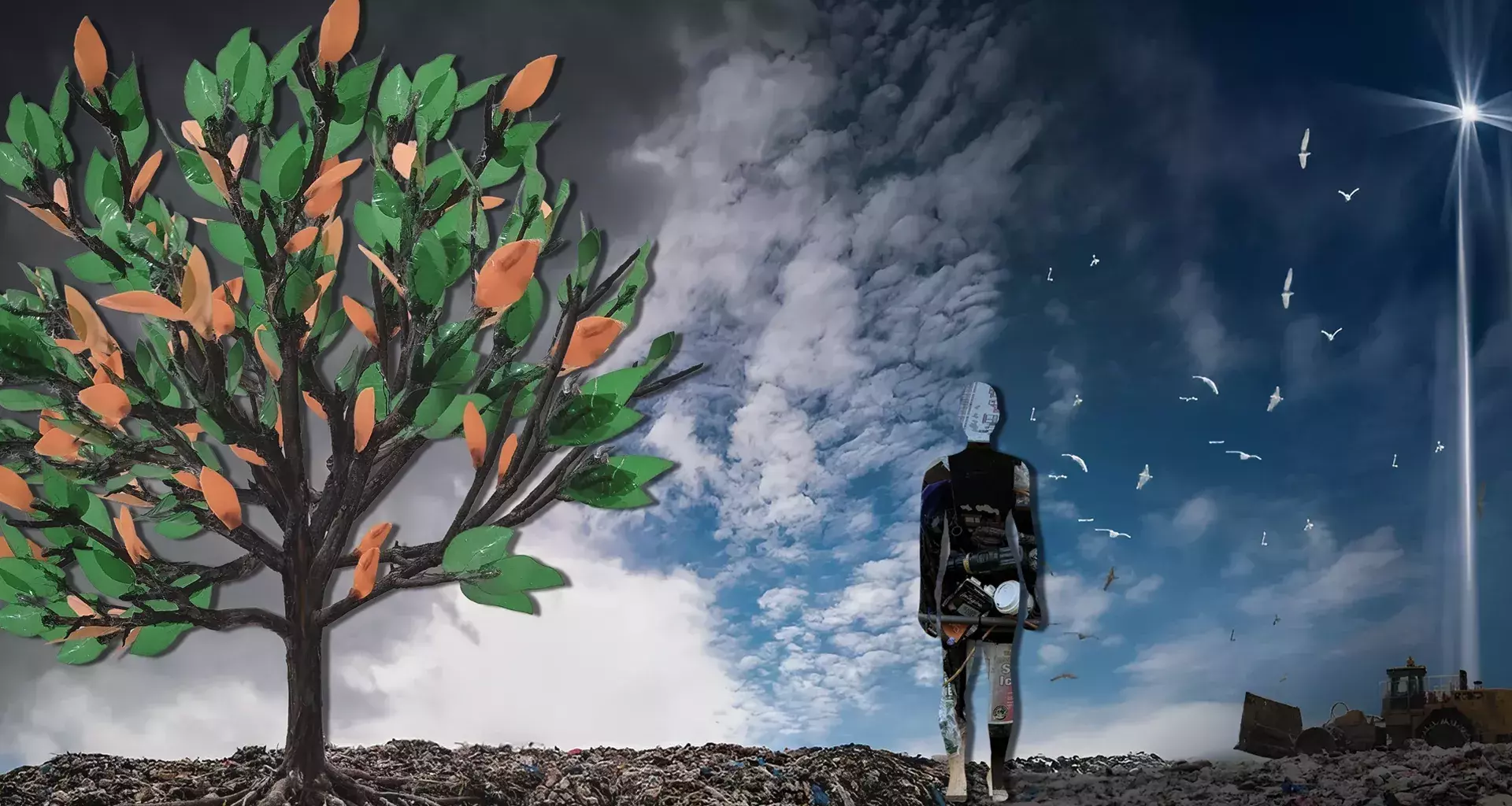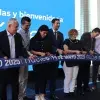Artwork created by students in the Creative Studies program at Tecnológico de Monterrey’s Hidalgo campus and Salem State University was exhibited at the Winfisky Gallery in Massachusetts as part of the binational project Trash to Art.
The exhibition was displayed from March 31 to April 18 as part of the Earth Day activities in Salem, Massachusetts. These pieces were made from recycled and waste materials to promote sustainability and environmental awareness through art.
Trash to Art is a Collaborative Online International Learning (COIL) project developed by students from both institutions, under the direction of professors Francisco González, from the Tec’s Hidalgo campus, and Tereza Swanda, from Salem State University.
For several weeks, participants worked in binational teams to create artwork using reused materials, merging ideas from different cultural contexts and reflecting on the impact of consumption.
“Art has no borders. It can connect people from different cultures and evoke emotions without the need to speak the same language,” said Fernanda Torres, a second-semester Communication student at the Tec.
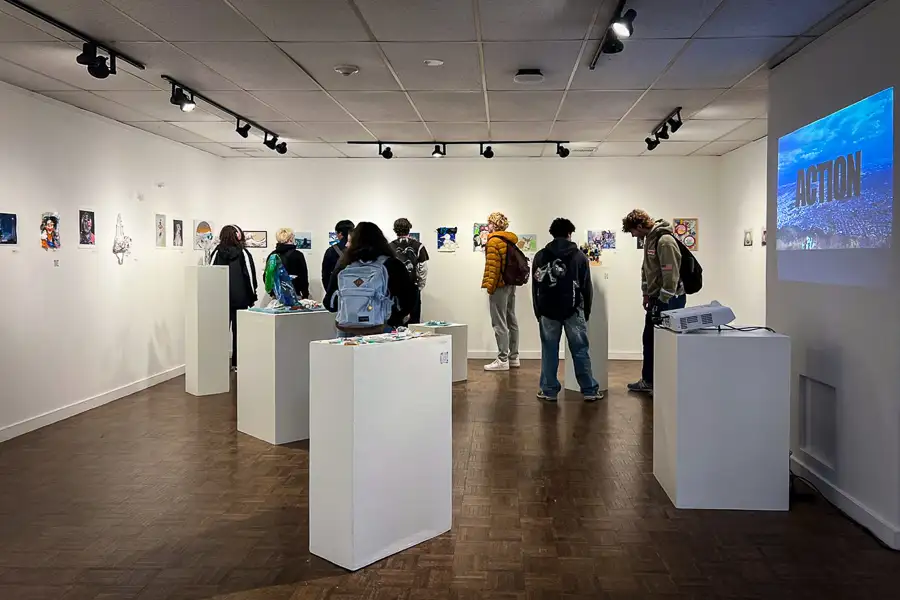
A message turned into art
Each piece presented in the exhibition resulted from a creative process that began with students thinking about the environmental impact of everyday consumption. Students from both universities chose waste materials they found and transformed them into pieces loaded with symbolism.
Emma Hernández used candy wrappers, tickets, old papers, cardboard, and paint to represent a musical exchange between cultures. “We realized that music can easily connect people from different places, so we decided to show the covers of two bands from our countries,” she explained.
Mohssine Manaf worked with bottles, cans, and pizza boxes to create a digital human figure, while his classmateIsrael Sánchez, from the Tec, designed a tree made from recycled materials. “We’ve connected two landfills, one in the United States and one in Mexico, to show how the problem is shared,” he said.
For her project, Kallyn Lavallee created a series of three-dimensional pieces from plastic bags and water bottles. “I crocheted a bag out of plastic and then made a bouquet. I find plastic interesting because we normally see it as a transparent material, but when you mold it in layers, it stands out more,” she shared.
Alejandro Trejo said that his work is inspired by classic figures in art, such as The Great Wave off Kanagawa, reinterpreting them from a sustainable perspective. “Each element had a new purpose: to become art, protest, and thought,” he said.
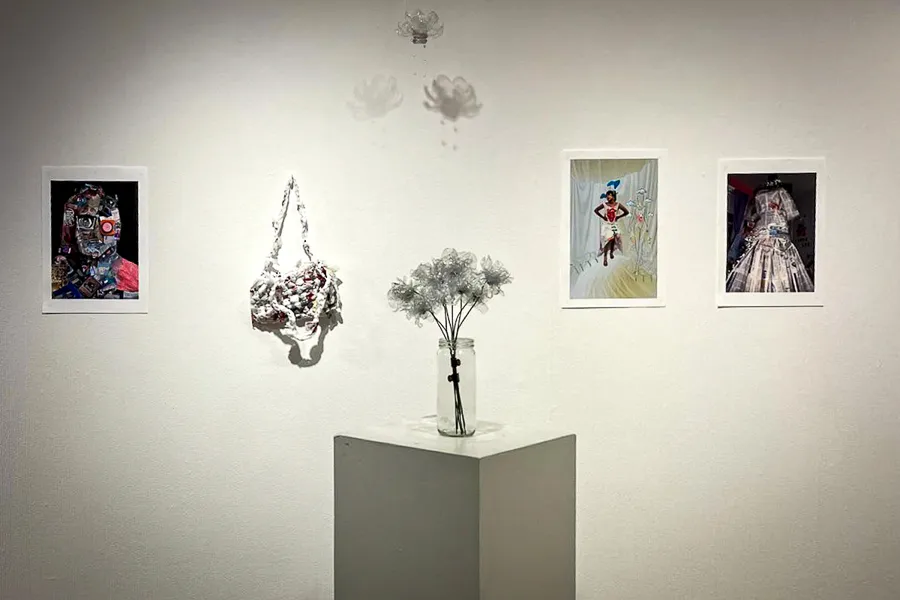
Art as an agent of change
The students were thrilled to see their work displayed in an international gallery, an experience that reinforces the value of art as a medium for communication and social awareness.
“Seeing my work on display made me realize that art has no borders. It can connect people from different cultures and evoke emotions without the need to speak the same language,” said Fernanda Torres.
Alejandro Trejo said that seeing his work interact with other people in an international context greatly impacted him.“A work of art made with simple materials now connects with people from very different backgrounds to mine. It made me feel heard and understood,” he added.
Kallyn Lavallee thought about how her view of what is disposable changed: “During and after making my pieces, I appreciated the material more. It’s funny how we decide what is valuable and what to discard.”
The professors agreed that art can be a powerful medium for raising environmental awareness. “Collaboration is better than confrontation. We can work together to tackle global challenges,” said Professor Francisco González.
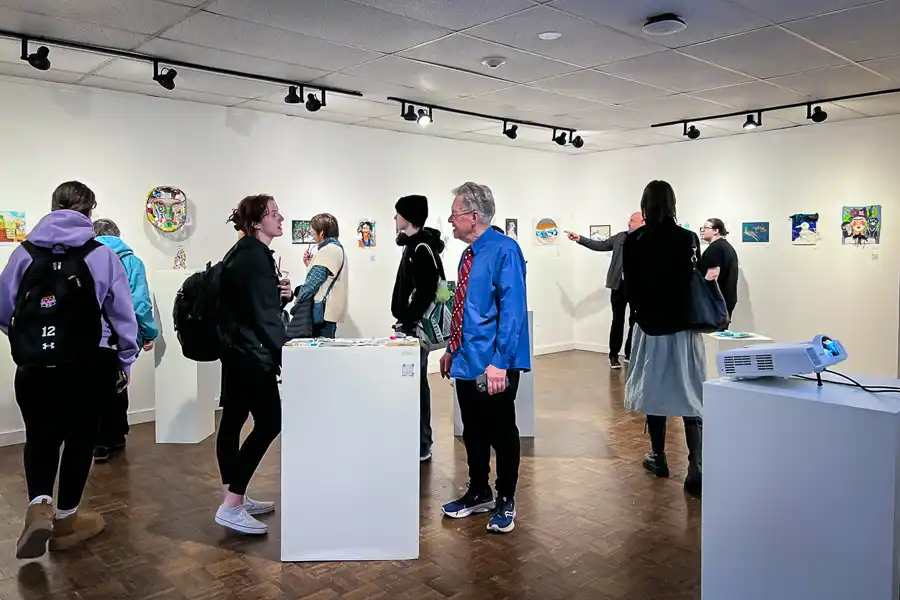
Conciencia ecológica desde la creatividad
Through the project, students from both universities thought about how much waste they generate daily and how it can be turned into art with an environmental message.
“This project allowed me to use waste as a medium to create a product with someone from a different culture, convey a message, and share a visual experience,” said student Fernanda Torres.
Alejandro Trejo, an architecture student at the Tec, described the process as “an exercise in transformation and deep reflection. It made me realize that not all disposable things are useless.”
Mohssine Manaf, a graphic design student from Salem, highlighted: “I used to think that trash was something you just threw away or recycled, but now I see that it can be transformed into something beautiful and lasting.”
The experience also helped students such as Emma Hernández, from the Tec, to recognize that “you don’t need professional materials to convey a message, as long as you have a clear idea of what you want to express.”
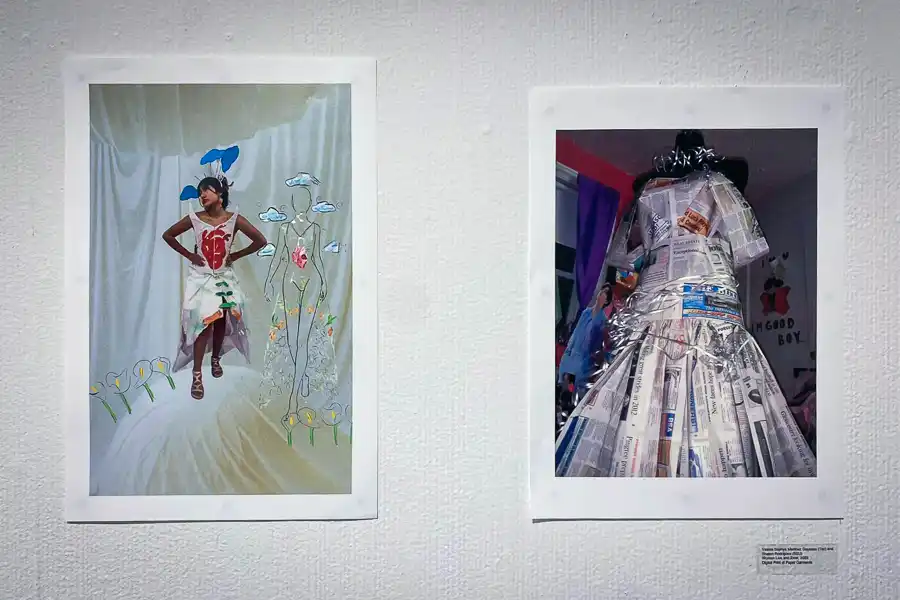
From the classroom to an international gallery
Trash to Art began as a collaboration between the Tec’s Hidalgo campus and Salem State University to connect art with sustainability from an educational perspective.
The project is part of a COIL (Collaborative Online International Learning) initiative that allows students from different countries to collaborate on joint academic experiences.
Professors Francisco González and Tereza Swanda, both art professors, promoted the proposal after identifyingcommon interests in contemporary art and the UN Sustainable Development Goals.
“We wanted to work on a global problem, so we decided to focus on climate change,” said Professor González.
“Art has a unique ability to question the current state of the world. It doesn’t always aim to provide answers, but rather to ask questions worth asking,” said Professor González.
Creating without borders
bridges of communication and understanding despite cultural, linguistic, and time differences.
One of the main challenges was coordinating work sessions between students who had never met in person. “Everyone had their activities, so working together was sometimes complicated,” said Fernanda Torres.
Alejandro Trejo said the key was to develop more empathetic communication: “We had some differences in how we worked, communicated, and even in the message we wanted to convey. We learned to listen to each other, to be patient, and to empathize through creativity.”
Kallyn Lavallee, an Art and Design student from Salem, overcame language barriers thanks to digital tools and the support of her classmate in Mexico. “Thanks to Google Translate and a lot of enthusiasm, we understood each other and discovered that we shared the same values and ideas.”
Despite the challenges, intercultural dialogue became essential to the artistic and learning process. “Our cultures are not opposed to one another; we can work together to tackle global challenges,” said Professor Francisco González.
“Art doesn’t always provide answers, but it raises questions worth asking.” - Professor Francisco González
An ongoing project
The collaboration between the two universities doesn’t end with this exhibition. According to Professor González, the plan is to take the exhibition to Mexico and explore new formats that include more disciplines and participants.
“We want to bring the exhibition to Pachuca or a local gallery. We want to do the same thing in Mexico as we did in the United States,” he said.
The Trash to Art experience not only put works of art on display but also sparked a shared reflection among the students: art can transform how the world is perceived and open paths to tackle global challenges through creativity.
“One of the most powerful ways to change culture is to embody the principles we learn,” said Professor Tereza Swanda. “These experiences allow students to recognize their impact and establish new relationships with materials, the environment, and themselves.”
READ MORE:

